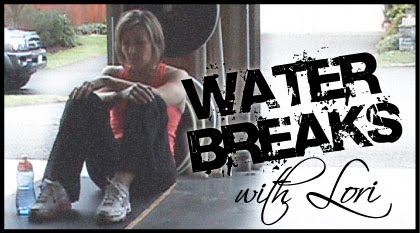 First, it needs to be said, yet again, that Olympic Weightlifting is the coolest sport on the planet. Yes, I said, the planet. Maybe not in your world, but it certainly is in mine. It’s beautiful and powerful, fast, precise and aggressive. It’s technical and intelligent. It’s everything I aspire to be. I’ve also found that girls with great snatches are very popular among certain crowds.
First, it needs to be said, yet again, that Olympic Weightlifting is the coolest sport on the planet. Yes, I said, the planet. Maybe not in your world, but it certainly is in mine. It’s beautiful and powerful, fast, precise and aggressive. It’s technical and intelligent. It’s everything I aspire to be. I’ve also found that girls with great snatches are very popular among certain crowds.So, I had a 5 pound PR (personal record) the other day doing a Snatch Balance at 120#. What is a snatch balance, you ask? Well, I will tell you. But for all you non-lifters, I should first tell you what a snatch is. It is quite simply, the most awesome lift EVER. Okay, that’s my definition. Here’s the technical one:
The Snatch
“The snatch is the first of two lifts contested in Olympic Weightlifting in which the barbell is lifted from the floor to overhead in a single movement. With it’s unparalleled speed and extensive range of motion, it epitomizes mechanical power – the performance of maximal work in minimal time – as well as technical precision.” – Greg Everett, Olympic Weightlifting, A Complete Guide for Coaches and Athletes, 2nd Ed.
See, I told you. . . It’s the most awesome lift EVER. I mean, if you can snatch, you’re cooler than sliced bread. Seriously. Doesn’t it make you want to pick up a barbell and learn to snatch? Well, actually you’ll have to start with PVC to learn the elements of the lift. But that’s a topic for another day.
Today we are talking snatch balance. It is a part of the Snatch Balance Series which includes the pressing snatch balance, the heaving snatch balance and the snatch balance.
The Snatch Balance Series
"The series of snatch balance exercise adds dynamic entry into the (receiving) position with increasing complexity and speed in order to better prepare the athlete to receive the snatch successfully.” – Greg Everett, Olympic Weightlifting, A Complete Guide for Coaches and Athletes, 2nd Ed.
And don’t we all want to receive the snatch successfully? I know I do! So what do I do to achieve this glorious skill? I practice. I practice a lot. I tape my lifts. I watch them back in slow motion. I watch for what I did right -- seeing if I hit the different positions properly. Sometimes I am happy with what I see. More often I see things that need work.
Today for example, I was snatching with a light weight, just working on technique. Oh jeez. Today my snatch was ugly. U-G-L-Y. But that’s what also makes lifting so dang wonderful. You’re never done. There is always something to work on. Get better at. It is a constant challenge. And hey, in all honesty, the things we want most in life, sometimes present challenges, right?
So this brings us to the snatch balance. It’s a skills transfer exercise and a great training tool. Here’s why:
The Snatch Balance
The snatch balance “is an aggressive exercise and demands maximal speed and effort,” -- Greg Everett
I quote him a lot. He’s much smarter about this stuff than I am. He is Catalyst Athletics @ http://www.cathletics.com, a great Olympic weightlifting website. He’s also married to Aimee Anaya Everett, my lifting idol. Anyway, what and how does this lift translate to the actual snatch? What does this movement teach us?
It teaches us proper foot transition and speed, and increases strength and confidence – all very important things when weightlifting. The lift begins with the bar behind the neck, on the shoulders in the snatch grip. Feet begin in the pulling position. The athlete will dip and drive the bar overhead while quickly dropping and transitioning the feet into the receiving position. The finish looks like an overhead squat. When you get proficient at this movement, you should be able to snatch balance significantly more weight that you can actually snatch. I don’t know if I could claim to be “proficient” at this movement, but my experience has proven this statement correct. My 1RM snatch is 100#. So yes, I snatch balance significantly more than I snatch.
I can snatch balance 120#. And that is so awesome. Until I can snatch balance 130#.


